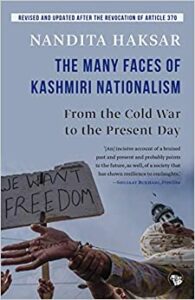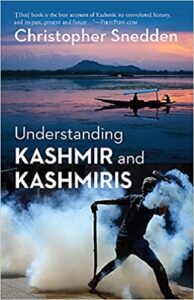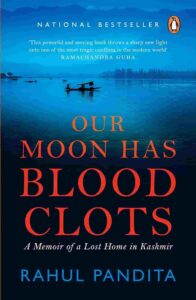
Don’t you know that you are not supposed to look at a soldier? You are supposed to keep your gaze lowered!” I remained silent, not bothering to explain. Outdoors, it was impossible to ignore the hideous structures. Like weeds, they had sprouted everywhere, following us no matter which route we took, staring us in the face. Who knows—they might eventually become landmarks, a part of our addresses: “the house next to the small bunker,” “the lane before the large bunker.
Why I Picked This Book?
When it comes to Kashmir, two dominant narratives often emerge: one from the Indian state and the other from the people of Kashmir. In this ongoing battle of ideologies, opinions are frequently shaped by political leanings, while the truth is often the first casualty. To develop a more balanced perspective, it’s essential to engage with the voices of Kashmiris and their lived realities. That’s why I chose this book by Farah Bashir, a writer born and raised in Kashmir.
The Book
This memoir captures the experiences of a girl growing up during the most volatile times in Kashmir. The author narrates how, post-1989, everything in Kashmir changed. Anger among the youth led to insurgency, which escalated into militancy, ultimately resulting in the increased presence of the Indian Army in the valley, making Kashmir one of the most militarized zones in the world. This book, however, focuses on how these events affected the daily lives of ordinary Kashmiris.
Rumors of Spring begins with the natural death of Farah’s grandmother in 1994, a time when militancy and counter-militancy measures were at their peak. During the mourning period, the author reflects on various incidents, using them to illustrate how life for ordinary Kashmiris has transformed over time. Festivities became subdued, people kept the lights low in their homes to avoid drawing the army’s attention, and windows were permanently closed to avoid stray bullets or tear gas fumes. Normal routines were disrupted, schools were often closed, shops shut down early, cinemas and malls were deserted, and carrying an ID card whenever stepping out became essential. Not carrying one could land you in serious trouble. Army shootings and militant bombings became a grim norm, with youth and men being picked up by the army, never to return, labeled as “disappeared.”
The author recounts these experiences through various incidents, some witnessed or experienced by her and others by people she knew. She describes how new army bunkers would appear almost daily, increasing restrictions, and how at any moment, the army could search your home for hiding militants in operations known as “crackdowns.” Yet, amidst this tension, she recalls moments of fun and happiness from the past—when Eid was celebrated with gusto, when they went to the cinema, or when she and her sister played their father’s music system.
The writing style is simple yet impactful, making it a book you can read in one sitting. As a former photojournalist, the author usually tells stories through her photographs, but in this novel, she paints a vivid picture with her words. You are transported to the location, feeling the suffocation, trauma, and tension of living under constant army surveillance. The frustration of being stripped of your rights is palpable, leaving you with a sense of being choked.
Rumors of Spring is a concise, compelling, and well-crafted book. A must-read for anyone seeking to understand the everyday realities of life in Kashmir under military presence.
About the Author
Farah Bashir was born and raised in Kashmir. She was a former photojournalist with Reuters and works as a communications consultant. Rumours of Spring is her first book.


